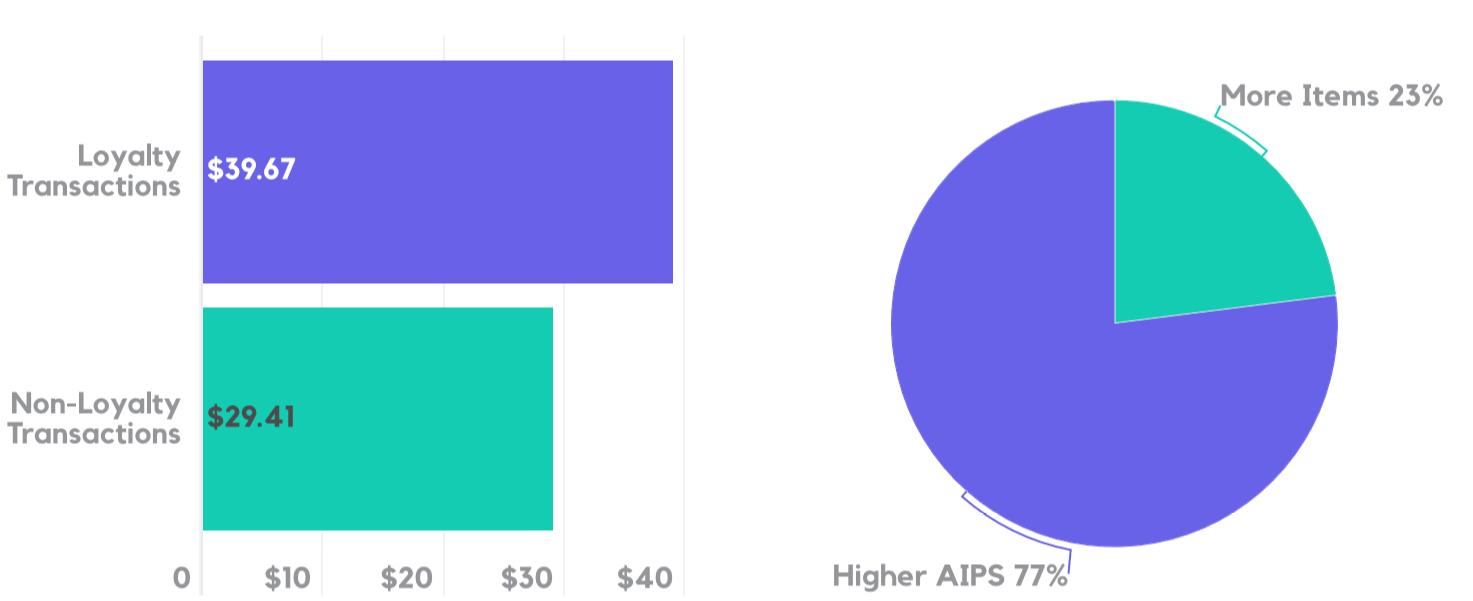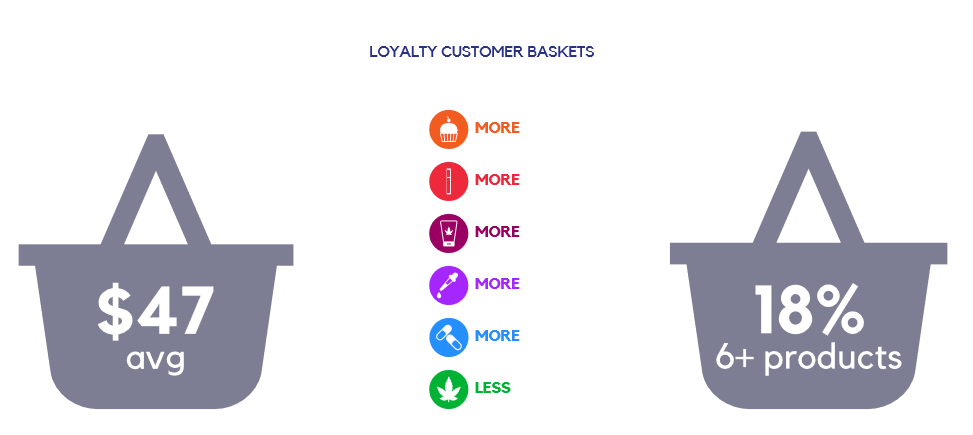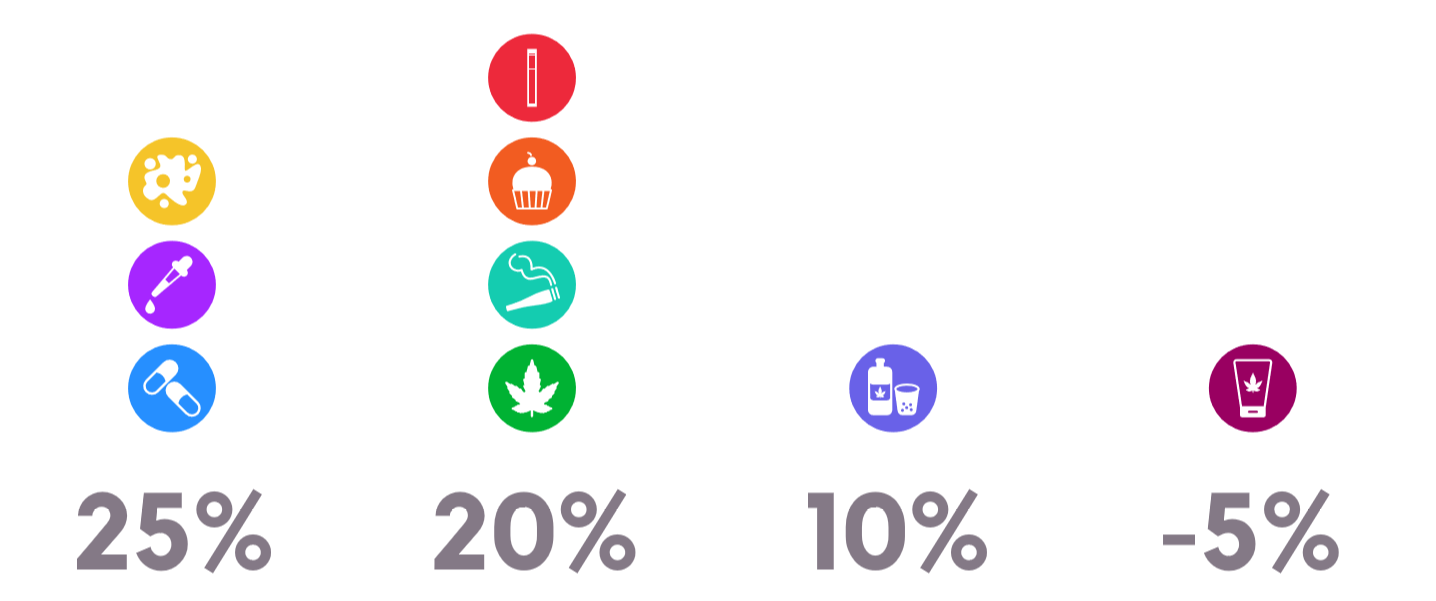Guest Post by the Headset Cannabis Data Analytics Team
At Headset, we collect and analyze real-time cannabis sales data, converting them to strategic insights so our customers make sound decisions that grow their business. Periodically we leverage our vast amount of data to publish reports on special topics of interest. I would like to share our latest report with the NCV readers. This report on loyalty customers’ buying patterns is a powerful example of the types of insights aggregated transaction data can yield.
 Cy Scott, CEO of Headset
Cy Scott, CEO of Headset
Executive Summary
This report uses Headset data from customers participating in loyalty programs to examine their spending habits. We examine what people in these programs buy, how much they buy, and what categories they buy in. We also examined whether loyalty programs actually create loyal (i.e. repeat) customers.
Introduction
Loyalty programs have become an increasingly important part of the cannabis retail landscape. Nowadays, any dispensary worth its salt has one, and customers are encouraged to sign up as they check out. The idea is, of course, to build a repeat customer base, and to delight customers via loyalty-linked discounts and promotions.
But does it work? Do loyalty programs make a discernible difference in how people spend their money, or are they—like the ubiquitous grocery discount cards—an afterthought? Turns out, they do. Consumers in a loyalty program spend more, buy more items, and buy more expensive items.
That said, they do have their pitfalls. A loyalty program does not automatically create loyal customers, and plenty sign up for one transaction, only to disappear from the data.
Loyalty programs are an interesting window into changing consumer behavior, and we hope this report will help retailers and general readers alike to better understand their use.
Methodology
Data for this report comes from real-time sales reporting by participating Washington State and Colorado cannabis retailers via their point-of-sale systems, which are linked up with Headset’s business analytics software. It also includes data from those retailers’ customer loyalty programs. The data in this report are from Washington State and Colorado in 2017. Those data are cross-referenced with our catalog of over 285,000 products to provide detailed information on market trends.
Headset’s data is very reliable, as it comes digitally direct from our partner retailers. However, the potential does exist for misreporting in the instance of duplicates, incorrectly classified products, inaccurate entry of products into point-of-sale systems, or even simple human error at the point of purchase. Thus, there is a slight margin of error to consider.
More Money, More Items
Loyalty customers spend more and get more. Baskets among loyalty customers are 35% larger on average than non-loyalty transactions. The average loyalty basket size is about $40, whereas non-loyalty consumers spend only $30.
This is driven by two factors: A slight increase in the number of items, from 2 to 2.2, and a significant increase in the average item price (AIP) of those items. AIP for items in non-loyalty baskets is $14.70 on average, which jumps to $18.41 for loyalty consumers. Though these increases might seem relatively slight, the effect is clear. For whatever reason—target discounts, already enthusiastic customers, or some combination of the two—loyalty programs lead to larger purchases.

Beyond just how much they spend and the number and price of items they buy, loyalty customers have more diverse baskets. For loyalty customers this is especially true of the first basket, which is both larger ($47 on average) and more diverse, with less Flower and more Edibles, Vapor Pens, Tinctures, Topicals, and Capsules.
In general, loyalty consumers buy more product types than other consumers. Their baskets are 15% more likely to have 4-5 different products, and 18% more likely to have a basket with 6 or more products. Customers in loyalty programs are clearly engaged and curious. Whether they were already adventurous or were encouraged to branch out once they joined the program is unclear, but the correlation is real.
Category Bonuses
Among the categories, loyalty program membership doesn’t drive a significant advantage of one over the other. Both loyalty and non-loyalty consumers exhibit a similar overall category mix, although they buy more different products from those categories, and more of them. Flower is about 55% of that mix for both types of shoppers, and the key difference is that loyalty program customers by 20% fewer Pre-Rolls and 15% more Concentrates. This is in keeping with the engaged consumer theme, as concentrates are more “advanced” products.
Though their product mix is similar, some categories do see loyalty program customers choosing more higher priced items. AIP for Concentrates, Capsules, and Tinctures & Sublinguals increased by 25% for loyalty customers. Edibles, Flower, Pre-Roll, and Vapor Pens had a 20% higher AIP among loyalty customers, and Beverages enjoyed a 10% boost. Interestingly, loyalty customers spent 5% less on Topicals.

A Sign Up of Convenience
And now for the bad news. Despite the increases in spending, product diversity, and AIP among loyalty customers, almost 40% sign up only for one initial transaction and never return. This suggests that some of the increased number of items in loyalty baskets, and the increased diversity of those items, is due to customers taking advantage of a sign-up promotion to try out as many new things as possible. While loyalty programs are a great way to deliver discounts and promotions, offering steep sign-up discounts might not be a good idea.
Conclusion
Loyalty programs have clear effects on consumer spending behavior. At their best, they can be exactly the nudge that they’re intended as, urging already enthusiastic consumers to branch out and splurge.
However, data on first baskets and the high number of single transaction customers suggest that plenty of loyalty programs are simply being taken advantage of for quick discounts. This still drives sales up, of course, but it doesn’t really create return customers.
Regardless, loyalty programs are becoming an increasingly common part of the retail experience. There’s a new iPad next to nearly every dispensary register. This is common across the consumer goods industry, being a time-honored tradition in coffee shops and wine wholesalers. Learning how to incorporate a loyalty program to maximum effect will be key.
Our data suggests that offering discounts to achieve a specific goal other than just signing up for the program is key. Consumers have become very comfortable giving out their e-mail addresses willy-nilly, and there’s no guarantee that capturing that will lead to them reading your newsletter and coming back to spend big.
Instead, see if you can convince them to return with achievement-unlock style discounts, like a reward for a second or third visit. Or for trying a new product. Consumers respond well to this type of incentive, and it’s a great way to keep your customers coming back for more.
Headset regularly publishes industry reports, which our readers can access here.
Headset is market data and business intelligence for the cannabis industry. Our extensive Industry Report deep-dives into specific brands to help businesses better monitor the competitive landscape and perform exhaustive category analysis. Reports are generated via aggregate, real-time transaction data to get a unique and thorough analysis of what’s happening in the cannabis industry as the data becomes available. Headset offers three distinct products that help retailers, dispensaries, brands, product manufacturers, distributors, and investors move ahead in the industry.



